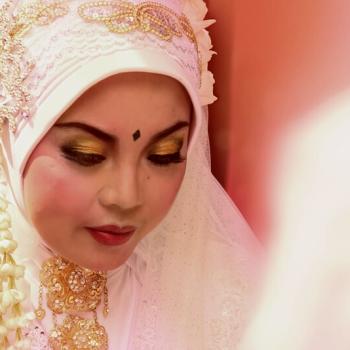Although Muslim women are often portrayed in the media as wearing nothing but black abbayas, black hijabs and, often times, burkas and niqabs, Muslim women are claiming a place within the fashion industry. On one hand, some Muslim women have become visible as models; on the other, some are working to change things for those looking for stylish clothes that meet their standards for modesty. Nonetheless, this does not come without challenges.

In the aftermath of 9/11 and the after-effects of Islamophobia around the Western world, we tend to see particular ideas on what Muslim women “look like” or what they should be doing (which usually has nothing to do with fashion).
However, Muslim women have become an important fashion market. A number of well-known fashion houses have attempted to appeal to them through the commercialization of “modest” pieces of clothing and head scarves, but to what degree this has been successful is questionable. Yet, Muslim women soon transcended their role as pure consumers to become the leading figures of the industry.
Much of the Western media was first shocked when Rima Fakih won the Miss USA title. Then, Hindi Sahli and Hanaa Ben Abdesslem came along to challenge Western stereotypes about Arab and Muslim women. Having Muslim and Arab models in the West is often described as a Western initiative that has allowed for the “globalization” of the industry with personalities like Kyle Hagler expressing that “We have a responsibility in the fashion community to reflect global beauty, to reflect the new economies and reflect their financial strengths,” and “I think we all became socially aware.”
However, many of these women have turned to modeling and fashion as a way to counter Islamophobia and the common images of Muslim women as silent observers that permeate the media.

While some conservative Muslims may not be thrilled by these developments, it is often their assumption – that under mainstream standards, women should not attract attention – that is used to question the legitimacy of Muslim women in the fashion industry. Yet, Muslim women have also turned to fashion as a way to accommodate religious needs.
One of the first leading women in the design industry was Amina Al-Jassim a Saudi fashion designer, who has become an iconic figure for Muslim fashion in the Middle East. Al-Jassim has had a great success not only in the Gulf, but also in the West. Nonetheless, she also has to deal with the political realities of the fashion industry in Saudi Arabia, which comes with accessibility challenges for women.
Even so, the experience provided by these women has allowed for a further development of the Muslim fashion industry, which is becoming increasingly represented by women. Despite what we might have expected given the male-dominated Western fashion industry, Muslim fashion is well represented by strong female designers who want to appeal both to Muslim and non-Muslim women.
Among these designers Nailah Lymus has made it to the headlines this week, despite questions by reporters on whether her designs could be worn by Muslim women or not. Her own attire seemed to surprise many in the media, who were puzzled by Lymus’ hijab and long sleeves. Margot Adler describes Lymus as “a devout Muslim” “[whose] dresses will surprise you” and later writes:

“But when you see Lymus’ clothes on the models, you realize no modest Muslim woman could wear most of them.”
Lymus, like Al-Jassim, has dealt with the political difficulties of being a designer, but in a different way. Lymus’ designs, she explains, attempt to counter the idea that Muslim women homogenously dress in certain ways, and calls women to “Islamify” clothes.
This is often expressed by other voices within the industry including Hana Tajima-Simpson and Sarah Elenany, who stated fashion lines to satisfy the needs of practicing Muslim women while appealing to a broader audience.
The common idea that Muslim women’s clothing is monolithic is being contested through the participation of Muslim women in the fashion industry. This is often a challenging fact for much of the media coverage on Muslim women, which emphasizes the intimidating aspect and “anti-socialness” of Muslim women’s attires to make a point about Islamism and conservativism. It also challenges the idea that mainstream fashion brand names can define and satisfy the needs of the female Muslim population.
Perhaps it is time for Muslim women in the fashion industry to bring their voice and their ideas to an industry that remains very male- and Western-dominated.












